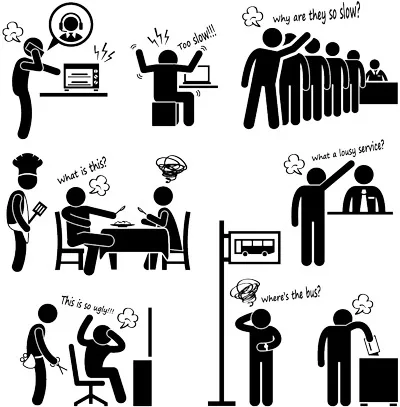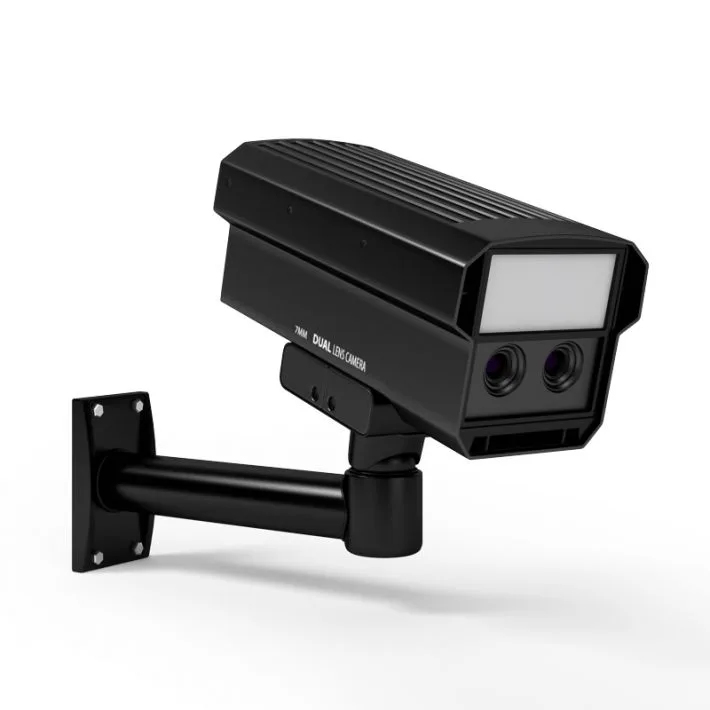Brief Overview
Passive facial liveness detection is a "second generation" solution, which does not require a person to perform a task to get verified.
The challenge of differentiating between human-like behavior from actual human behavior has been studied for decades. In 1950 Alan Turing proposed his famous Turing test which was used to determine whether computers were capable of thinking like a human. But it was not until the early 2000s when the term "liveness" was proposed in the context of biometric verification.

In response to the growing threat of the spoofing attacks, systems using active liveness detection methods were gradually developed. Active detection systems are still used today and are based on challenges that a person needs to solve to be authenticated. The user may have to make a facial expression or say a passphrase to indicate that they are actually present and not committing a form of presentation attack.
However, the active approach is still vulnerable to some Presentation Attack Instruments (PAIs) as these malicious tactics evolve. Fraudsters are known to employ various tools, from masks with empty eyeholes to AI-powered animation apps like Zao, Face Swap Live, etc. to spoof active detection.
As an alternative, a new approach was suggested: passive facial liveness detection. The passive approach employs more subtle and advanced techniques — such as machine learning — while functioning in the background without the user having to participate. This, in turn, greatly contributes to a better user experience, cutting down on customer frustration while enhancing security.
Advantages of Passive Liveness Detection in Facial Recognition
As various experts highlight, passive facial liveness detection offers of a group of benefits:
- Faster response.
- Decreased waiting time.
- Smoother customer experience.
- Cost-efficiency and resource optimization.
- Improved security and immunity to certain Presentation Attacks (PAs).
Advances in passive liveness detection advantages are due to more sophisticated techniques and solutions on both hardware and software sides. The advent of these technologies has introduced five main advantages:
1. Improved Security
The passive face liveness follows the security through obscurity (STO) principle. That means, a user may not realize that he/she is under scrutiny by a facial recognition system at a given moment. Such a covert method helps to keep potential malicious actors unaware as well. As they do not know which steps a detection algorithm takes, they are not able to develop new spoofing tactics through reverse engineering to bypass the system. One of the major weaknesses that an active approach has is its vulnerability to the Presentation Attack Instruments (PAIs). Fraudsters are known to employ various tools: from masks with empty eyeholes to AI-powered animation apps like Zao, Face Swap Live, etc. to spoof active detection. Passive liveness approach prevents many of these hazards. Although it has its own vulnerabilities, a simple image cutout, for example, would prove useless against a passive detection system.
2. User-friendliness and Security Frustration
Another critical factor in recognition systems is the end user’s convenience. Active approach often increases the so-called "customer friction". In other words, checkout and verification processes become lengthy and tedious.

A similar phenomenon applies to password usage. A survey by American Post indicated that Americans are irritated by elaborate security measures. This observation can be dubbed "security frustration". The issue applies to both online and real-life venues. Baymard Institute reports that at least 17% of all carts are abandoned online due to a complicated checkout process. In some cases, checkout requires customer verification before a purchase can be made, as demanded by security standards like Know Your Client.

Though KYC safeguards are helpful for security, they are a barrier to customer attraction and retention. A case report found a staggering 40% of clients quit the digital onboarding process — the process of gathering customer information to grant customers access to a service remotely — due to friction and waiting times. Further, some experts indicate that requiring a certain task — nodding, smiling, turning the head — can make customers feel suspicious or uncomfortable.
Overall Efficiency
As a rule, passive facial liveness detection is easier and cheaper to maintain. Active solutions require more traffic data to be sent to the servers. They may also force an end user to install extra applications on their device, whereas with passive liveness solutions, this is unnecessary.
Passive liveness techniques are also more easily applicable to situations where large amounts of data must be processed. Many real-life venues also rely on facial recognition: stadiums, airport terminals, museums, and so on. Passive approach techniques, unlike active liveness methods, require less time and therefore avoid "traffic jams" which disrupt work and customer flow.
3. Performance Speed
Passive liveness usually uses a single image to detect and analyze the liveness. Therefore, near real-time assessment is possible. Meanwhile, active solutions can require up to a minute or even more to finalize the liveness check.
4. Compliance
Various passive detection systems are fully compliant with the ISO/IEC 30107-3 certification. It is a generally accepted industry standard, which defines Presentation Attack Detection and provides test instructions. (See the article on facial anti-spoofing certification). FIDO approval is another standard to take into consideration. FIDO stands for Fast Identity Online. The goal of this alliance is to create a safe online environment where friction is minimized. Some facial recognition solutions are already certified by FIDO.
Passive Facial liveness Detection Methods
To ensure quick and painless liveness detection of a target’s face, passive approach employs various methods. These include both hardware and software solutions, which mostly work in a well-coordinated unison.

Blinking Analysis
Along with facial expressions and breathing patterns, blinking is one of the main liveness indicators in active and passive liveness detection. Modeling a blinking activity with the Conditional Random Fields (CRFs) is an effective way to detect a human face. In essence, blinking includes two sub-actions: opening and closing of the eyes. Considering the "binary" nature of this process, a sequence of images can be created and analyzed even with a simple web camera. Since it’s virtually impossible to predict the blinking pattern by knowing only the previous and current states, researchers suggest that Conditional Random Fields should be used as probabilistic models. CRF can be trained for modeling long-range dependencies between observations, which helps to detect facial liveness. Authors mention that this approach is more efficient than the cascaded Adaboost and HMM methods.
Flash-based Analysis
Observing the effect of lights flashed at a person is another efficient technique. With the help of active flash, the system can quickly identify whether the face presented is real or artificial. In essence, the idea involves frequency range analysis based on the power spectrum. The principally analyzed regions are high and low frequencies. 3D objects — like a human face — have a specific illumination component, which impacts the low frequencies. Artificial objects like masks or cutouts create a certain discrepancy in the high frequency regions if compared to a live face. As a result, active flash helps to detect that certain frequency information is missing if the system is presented with a fake object.
Illumination-based Analysis
Illumination-based analysis is another promising passive liveness technique, which focuses on analyzing light reflection off the human retina. As a study shows, human retina stably reflects 90% of the light if exposed to incident illumination at a 850 nm wavelength emitted along the optical axis. If the wavelength is increased to 950 nm, only 40% of light will be reflected. The effect is dubbed "bright pupil feature" and involves Near-Infrared Image and RGB analysis. Anisotropic diffusion analysis is another promising method that uses light. It’s based on the principle that light diffusion is slower if it’s reflecting off a 2D object. Artificial faces lack the texture of a real face and therefore do not give the same results when exposed to light. In this way, the illumination and diffusion based methods can detect a fake presented face.

3D Camera Analysis
3D or stereoscopic cameras are equipped with the binocular lens system, which emulates human vision. Basically, such a camera can easily scan and identify 3D objects. Therefore, PAIs such as image cutouts or printed photos can be easily detected by a 3D camera. Interestingly, 3D camera face recognition is gaining popularity in retail as it helps diminish truancy among employees.

Other Analysis Methods
Anti-spoofing is an ongoing research avenue and new methods of passive detection are proposed regularly in scientific literature. A promising technique is texture-based analysis, which scrutinizes differing characteristics of both human skin and synthetic materials.
Another technique, discriminative image patch analysis divides a face into a "grip of non-overlapping local patches". These patches then go through a ranking process according to their discriminative power. With the help of a classifier — Naive-Bayes, QDA — and majority-voting scheme, the system can accept or reject a presented face.
FAQ
What are the main advantages of passive facial liveness detection?
Passive facial liveness detection is considered more beneficial than the active approach.
When it comes to passive facial liveness detection, experts highlight a number of advantages:
- High security. It works in the background regime: perpetrators are unaware of its detection mechanism.
- Reduced customer friction. It leads to higher conversion rates and overall customer satisfaction.
- Performance. Passive method works faster.
- Cost-efficiency. Requires less traffic data and server capacity to function. Technical maintenance is cheaper as passive detection requires less frequent security upgrades.
Passive approach is considered safer and more effective in light of antispoofing performance.
What are the main passive facial liveness detection methods?
Passive facial liveness detection successfully employs a number of techniques to do facial examination in the background.
Passive facial liveness detection involves techniques that allow the identification of faces quickly and conveniently:
- Blinking analysis. Includes creating a sequence of images and analyzing the blinking patterns of a person.
- Flash-based check. Flashes light on a face to perform a frequency analysis, which negates usage of masks or cutouts.
- Lighting-based method. Analyzes the way light reflects off the human retina.
- 3D camera technique. Stereoscopic cameras are capable to scan 3D objects like a human head.
Additional methods include texture-based analysis, discriminative patch analysis, body and face verification, and more. New methods are always emerging as technological possibilities unfold.
In fact, several facial liveness detection competitions have come on the scene as ways to showcase potential new approaches — read more about it here.
References
- Privacy advocates sound alarm as thousands of Chinese facial recognition cameras head for Belgrade
- Turing test
- "Liveness" term
- Security Through Obscurity (STO)
- What is reverse-engineering?
- Customer Friction | What Is It & How Do You Reduce It?
- Customer friction kills sales
- Americans are sick and tired of passwords and security questions
- 46 Cart Abandonment Rate Statistics
- The debate over active or passive liveness detection and frictionless biometrics
- The importance of passive facial liveness detection
- Fight Face Recognition Spoofing
- Active vs. Passive Liveness Detection: What Every Business Should Know
- ISO/IEC 30107-3
- FIDO approval
- Already certified by FIDO
- Insight on face liveness detection: Asystematic literature review
- Face Liveness Detection Using a Flash Against 2D Spoofing Attack
- Face Liveness Detection through Blinking Eyes
- An overview of face liveness detection
- Face Liveness Detection Based on Joint Analysis of RGB and Near-Infrared Image of Faces
- Anisotropic diffusion analysis
- A New Dimension: How 3D Technology is Reshaping Retail
- A stereoscopic surveillance camera
- Face Spoof Attack Recognition Using Discriminative Image Patches

